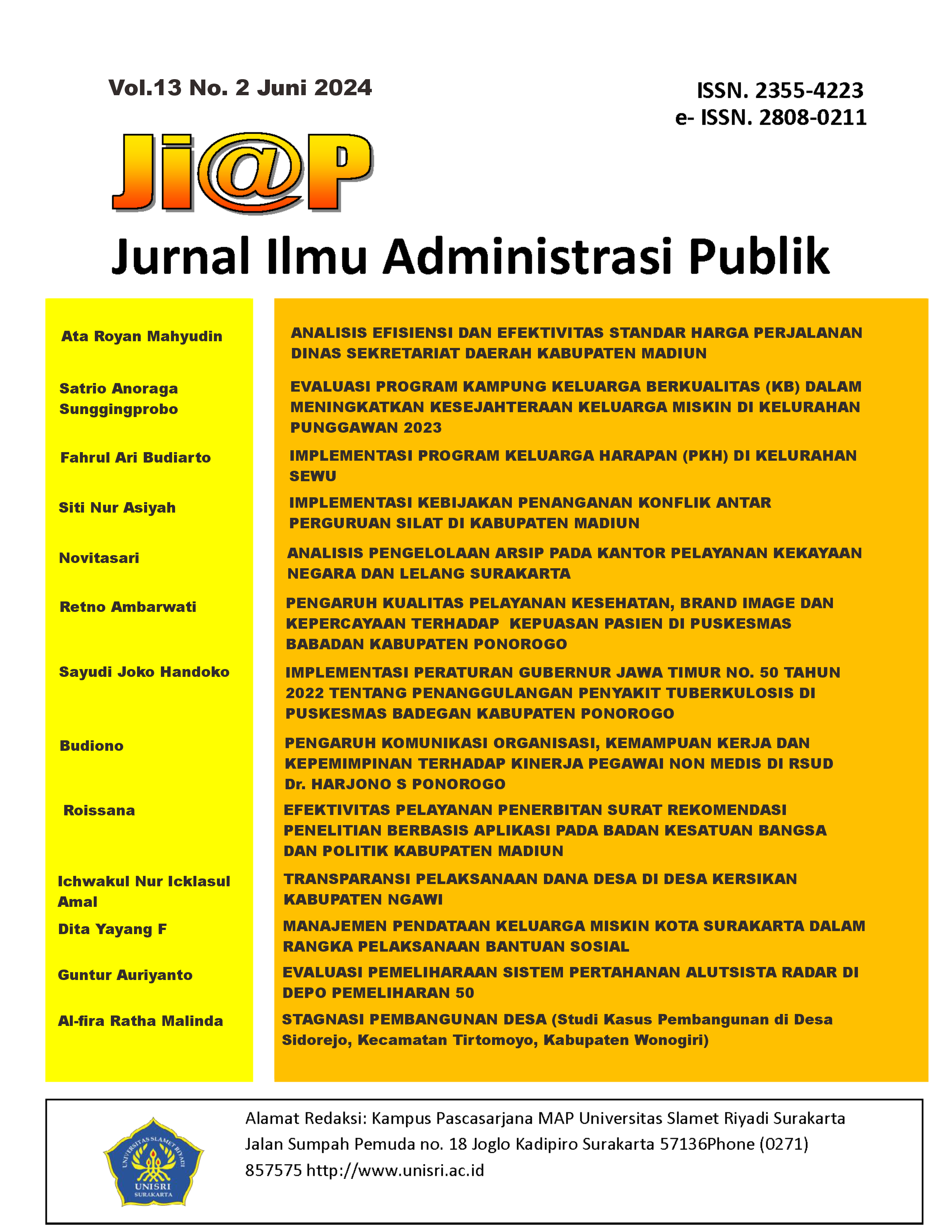EVALUASI PEMELIHARAAN SISTEM PERTAHANAN ALUTSISTA RADAR DI DEPO PEMELIHARAN 50
Abstract
The Maintenance Depot 50 is still short of personnel, and lacks adequate radar maintenance
infrastructure. In addition, there is damage and a decrease in the condition of the Test Bench on
several Sathars. This research uses a descriptive method with a qualitative approach. Research
informants using purposive sampling technique. Data collection techniques using in-depth
interviews, and documentation. The interactive analysis data analysis technique consists of data
collection, data condensation, data presentation and conclusion drawing. The results showed 1)
Context evaluation, the needs that have not been met are the fulfillment of personnel needs
(HR), and facilities and infrastructure needs. 2) Input evaluation, there is still a shortage of
personnel, which should be 502 personnel but currently there are only 329 personnel, thus
affecting radar maintenance activities. 3) Process evaluation, fulfills the requirements set in
accordance with the regulations of the Air Chief Marshal, according to the set schedule. 4)
Product evaluation, the initial plans and objectives in radar maintenance can be achieved,
although there are still some problems. The impact that arises is that all radars in Indonesia if
they experience damage / problems are immediately resolved so that they can operate normally
and well, thus having a positive impact on units that have radar defense equipment. From the
evaluation results, the radar maintenance process looks good, however, it is expected to further
maximize the implementation of maintenance and repair activities for existing radar equipment.
Keywords: Evaluation, CIPP Model, Radar Maintenance.
Downloads
Published
How to Cite
Issue
Section
License
Copyright (c) 2024 Guntur Auriyanto, Winarti Winarti, Aris Tri Haryanto

This work is licensed under a Creative Commons Attribution-NonCommercial 4.0 International License.
Authors who publish this journal agree to the following terms:
- Authors retain copyright and grant the journal right of first publication with the work simultaneously licensed under a Creative Commons Attribution License that allows others to share the work with an acknowledgement of the work's authorship and initial publication in this journal.
- Authors can separately make additional contractual arrangements for non-exclusive distribution published by the journal (e.g., publish it in a book), with an acknowledgement of its initial publication in this journal.
- Authors are allowed and encouraged to send their work via online (e.g., in the institutional repositories or their website) after published by the journal.













